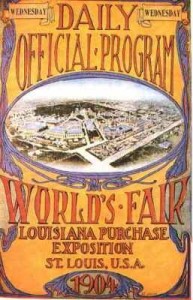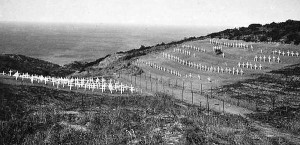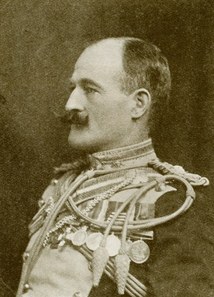Appearing on the cover of Vanity Fair last week, Caitlyn Jenner revealed her new identity and name to the world. She was previously known as Bruce Jenner, and was the 1976 Olympic decathlon champion. Probably the most famous transgender worldwide, Jenner’s definitely the most famous transgender Olympian. But is she also the first?
Jenner after winning Olympic decathlon gold in 1976.
The answer is, as you might expect on this site, no. As far as we know, Jenner is the second transgender Olympian, the first one being Balian Buschbaum, who announced his gender reassignment surgery in 2008. Under the name Yvonne, Buschbaum had competed in the women’s pole vault at the 2000 Sydney Olympics. The reigning European Junior Champion, she placed a credible sixth.
Buschbaum after winning a medal at the 2002 European Championships
Jenner and Buschbaum are not the only transgender athletes in history, of course. A few famous examples:
- In the 1930s, Czechoslovakian middle distance runner Zdena Koubková, winner of the 800m at the 1934 Women’s World Games, underwent surgery to become Zdeněk Koubek.
- In 1979, tennis player Renée Richards reached the third round of the US Open ladies’ singles, and semi-finals in mixed doubles. She had been born as Richard Raskind, and had competed in the men’s tournament in the 1950s. Richards had to go through a long legal battle before being allowed to play, but she achieved a landmark victory for transgender rights in sports.
- 1986 European shot put champion Heidi Krieger (DDR) became Andreas in 1997, although this was heavily influenced by the immense doses of anabolic steroids that Krieger had received from the DDR doping program as an athlete.
Andreas Krieger, formerly known as shot putter Heidi Krieger.
Both Jenner and Buschbaum only underwent gender reassignment after their Olympic appearances. To our best knowledge, no Olympians have competed after transgender surgery. It may only be a matter of time before transgender athletes do compete, as transgender athletes are appearing in several sports, such as cyclists Natalie van Gogh (Netherlands) and Michelle Dumaresq (Canada). However, their involvement in sport is still controversial. Especially in the case of men becoming women, many perceive this as an unfair competitive advantage. While transgenders might have some physical advantages (such as a greater height), their hormone treatments actually puts them at a disadvantage compared to their competitors.
A glimpse of the expected controversy of transgenders competing in the Olympics might be seen by looking at intersexual athletes. Often confused with transgenders, intersexuals have both male and female characteristics from birth. Some, but not all also decide to undergo surgery to become either a man or a woman. The history of intersexuals in the Olympics has been troublesome.
Polish sprinter Stanisława Walasiewicz (also known as Stella Walsh), who won the 100 m at the 1932 Olympics, had on several occasions been accused of being a man. Upon her death, it was revealed she was a gynandromorph, implying normal external sexual characteristics, but mixed internal sexual organs. In many sources, however, this is (still) simplified to her being a man.
1932 sprint champion Walasiewicz and 1936 champion Stephens.
A contemporary of Walasiewciz, German high jumper Dora Ratjen, fourth at the 1936 Olympics, was “exposed” as a man after winning the 1938 European Championships. Ratjen was, in fact, intersexual, and had been raised as a girl. Ratjen did officially register as a man subsequently, under the name of Heinz.
Due to suspicions that some (Eastern European) female athletes competing in the 1950s and 1960s were in fact men, the IOC and other sports federations introduced so- called “sex-tests”. Polish sprinter Ewa Kłobukowska, Olympic relay champion in 1964, was banned from sports in 1967 after failing the original IOC gender test (see below). Kłobukowska would have passed later versions of the test, and to prove her womanhood, she gave birth to a son in 1968.
Another noted victim of the sex tests was 1966 giant slalom champion Erika Schinegger. Prior to the Grenoble Winter Olympics, she failed a sex test due to being intersexual, and was not allowed to compete. Schinegger later officially became a man, Erik Schinegger.
In the 1990s, prompted among others by lawsuits by Spanish hurdler Maria José Martínez-Patiño, most sports governing bodies abandoned the tests.
The whole concept of gender identity is a difficult one, both in sports and scientifically and psychologically in society, and in sports it has a long history. In the 1960s, concern about the problem of men posing as women to gain a competitive advantage led to the introduction of gender verification by the IOC, at the time called sex testing. Several female track & field athletes were then suspected of being genetically male.
From 1968-88, all women wishing to compete in the Olympics were required to undergo sex testing, with one exception, that being Princess Anne of Great Britain, who competed in the 1976 Olympics in the equestrian events. Testing was initially done by obtaining a buccal smear, or a scraping of the cells of the inner wall of the mouth. The cells were examined for the presence of a Barr body, which occurs almost exclusively in females. Females are genetically labeled as XX, while men are labeled as XY, those being the classifications of the respective sex chromosomes. The second X chromosome possessed by women contains a structure termed the Barr body.
Though some men did attempt to breach the rules and compete as women, the entire subject of mixed sexual characteristics is a highly complex and emotional one. A number of people with mixed sexual identity may have elected to compete as women for psychological reasons. In addition, doctors typically label babies with indeterminate genitalia as women. And in certain cases of mixed sex classification, some people who would be considered women lack a Barr body, and would thus have been disqualified.
Because of these problems, the test was later changed and the buccal smear no longer used. Women were then cleared for international competition by doctors after simply undergoing a physical examination. In the late 1980s, this method was replaced by a polymerase chain reaction evaluation, looking for the Y-linked SRY gene (sex-determining region Y), and this method was used at both the 1992 and 1996 Olympics
But problems still existed. It was noted that the test failed to exclude all potential impostors, was discriminatory against women with disorders of sexual development, and could be psychologically devastating for a female athlete failing such a test. Thus, during the 1996 IOC World Conference on Women and Health, the IOC passed a resolution “to discontinue the current process of gender verification during the Olympic Games.” The IOC Athletes’ Commission recommended to the IOC Executive Board in January 1999 that gender identification should be eliminated, and this decision was ratified by the IOC Executive Board in June 1999.
However, the IOC Medical Commission addressed the issue of sex reassignment in 2003-2004. Their recommendations were approved by the IOC Executive Board in May 2004. The conclusions of this study were: 1) individuals undergoing sex reassignment of male to female before puberty should be regarded as girls and women (female); 2) individuals undergoing sex reassignment of female to male before puberty should be regarded as boys and men (male); 3) individuals undergoing sex reassignment from male to female after puberty (and vice versa) be eligible for participation in female or male competitions, respectively, under the following conditions: 3a) surgical anatomical changes have been completed, including external genitalia changes and gonadectomy; 3b) legal recognition of the assigned sex has been conferred by the appropriate official authorities; 3c) hormonal therapy appropriate for the assigned sex has been administered in a verifiable manner and for a sufficient length of time to minimize gender-related advantages in sport competitions; 3d) eligibility should begin no sooner than two years after gonadectomy; and 4) evaluation will occur on a confidential case-by-case basis.
The entire subject is very difficult, in many ways. Interestingly, Renée Richards, described above as playing on the Women’s Tennis Association (WTA) tour after changing to female gender, has come to believe that the IOC ruling is incorrect, and that men changing to women should not be allowed to compete at the highest levels of sport, because they could have an advantage. Of note, Richards is a medical doctor and likely understands all aspects of this discussion far better than anyone. See her interview and discussion on the topic here.
All these multiple administrative decisions paved the way for Brazilian judoka Edinanci Silva to compete in the Olympics from 1996 through 2008. Born intersexual, she underwent surgery to become a woman.
Edinanci da Silva after winning at the 2007 Pan American Games.
But the abolition of gender testing did not kill all controversy. In 2009, South African Castor Semenya won the women’s 800 m at the athletics World Championships. There were wild speculations about her being a man and/or having a genetic disorder. The IAAF responded non-tactfully and with a re-instated gender test, but her results were allowed to stand. Semenya went on to carry the South African flag at the opening of the 2012 Olympics, and won a silver medal in the event.
Let’s hope that Caitlyn Jenner’s public transition will help future transgenders and intersexuals in being accepted as regular competitors.




